

A story in The Art Newspaper today suggests a review —
… And then there is the motto "Principles before personalities."
https://www.rollingstone.com/music/music-news/
ronnie-hawkins-obituary-1360442/
See also other posts now tagged Night Hunt.
For some material much more on the theory side,
see a Log24 post from the above IG date — Nov. 18, 2020 —
in posts tagged Qubes —
"Black art" → "Black magic"
|
https://www.latimes.com/obituaries/story/2022-05-28/
Keasha Dumas Heath, executive director at
Keasha Dumas Health, executive supervisor at |
Consider the source.

[Verse 1]
Oh, I could hide 'neath the wings
Of the bluebird as she sings
The six o'clock alarm would never ring
But it rings and I rise
Wipe the sleep out of my eyes
My shavin' razor's cold and it stings
Last two days of the conference, May 27 and 28, 2022 —
|
27th Friday
9:00 – 10:00 Andrés Villaveces (Univ. Nacional de Colombia):
10:00 – 11:00 Olivia Caramello (Univ. of Insubria; by Zoom): 1:00 – 11:15 Coffee Break
1:15 – 12:15 Mike Shulman (Univ. of San Diego):
12:15 – 1:15 José Gil-Ferez (Chapman Univ.) 1:15 – 2:30 Lunch
2:30 – 3:30 Oumar Wone (Chapman) :
3:30 – 4:30 Claudio Bartocci (Univ. of Genova):
4:30 – 5:30 Christian Houzel (IUFM de Paris): 28th Saturday
9:00 – 10:00 Silvio Ghilardi (Univ. degli Studi, Milano):
10:00 – 11:00 Matteo Viale (Univ. of Turin; by zoom): 11:00 – 11:15 Coffee Break
11:15 – 12:15 Benjamin Collas (RIMS, Kyoto Univ.):
12:15 – 1:15 Closing: general discussion |
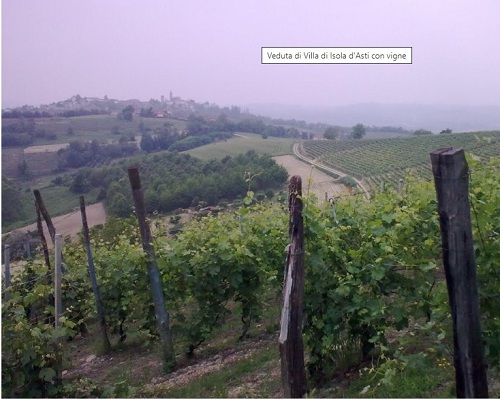
I order the gin martini I’ve been anticipating
for the last twenty-four hours.
"Sorry. We only have wine.”
“You’re kidding me, right?”
He shrugs, reaching for a laminated pamphlet
that lists the bottles at his disposal.
It’s wine country, after all.
I start to read through the vineyards,
but the compound names quickly blur—
I don’t know a thing about wine.
I shut the menu.
“Something very cold and strong.”
— Steinhauer, Olen. All the Old Knives (p. 22).
St. Martin's Publishing Group. Kindle Edition.
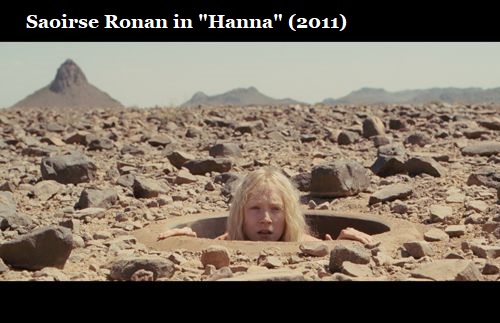
The above scene from "Hanna" comes from a webpage
dated August 29, 2011. See also …
"With the Tablet of Ahkmenrah and the Cube of Rubik,
my power will know no bounds!"
— Kahmunrah in a novelization of Night at the Museum:
Battle of the Smithsonian , Barron's Educational Series
Scholium —
Abstracting from narrative to structure, and from structure
to pure number, the Tablet of Ahkmenrah represents the
number 9 and the Cube of Rubik represents the number 27.
Returning from pure abstract numbers to concrete representations,
9 yields the structures in Log24 posts tagged Triangle.graphics,
and 27 yields a Galois cube .
From the Amazon.com description of Colin Cantwell's space novel Corefires —
"Of the cargo, the data Crystals are the most important.
Necessary to life in space, they have to be protected at all costs."
Related merchandise — Disney Holocrons:
The words in the above title were suggested by
The New York Times yesterday ("2022-05-24T21:54:19.000Z")
on a Saturday, May 21, death —
"Colin Cantwell, an animator, conceptual artist and computer expert
who played significant production roles in seminal science fiction films
like '2001: A Space Odyssey,' 'Star Wars' and 'WarGames,' died
on May 21 at his home in Colorado Springs, Colo. He was 90."
Cantwell at Teotihuacan pyramid, September 26, 2019 —
A different image, also from September 26, 2019,
in other Log24 posts tagged Pyramid Game —
The letter labels, but not the tetrahedron, are from Whitehead’s
The Axioms of Projective Geometry (Cambridge U. Press, 1906),
page 13.
From a Jamestown (NY) Post-Journal article yesterday on
"the sold-out 10,000 Maniacs 40th anniversary concert at
The Reg Lenna Center Saturday" —
" 'The theater has a special place in our hearts. It’s played
a big part in my life,' Gustafson said.
Before being known as The Reg Lenna Center for The Arts,
it was formerly known as The Palace Theater. He recalled
watching movies there as a child…."
This, and the band's name, suggest some memories perhaps
better suited to the cinematic philosophy behind "Plan 9 from
Outer Space."

"With the Tablet of Ahkmenrah and the Cube of Rubik,
my power will know no bounds!"
— Kahmunrah in a novelization of Night at the Museum:
Battle of the Smithsonian , Barron's Educational Series
The above 3×3 Tablet of Ahkmenrah image comes from
a Log24 search for the finite (i.e., Galois) field GF(3) that
was, in turn, suggested by last night's post "Making Space."
See as well a mysterious document from a website in Slovenia
that mentions a 3×3 array "relating to nine halls of a mythical
palace where rites were performed in the 1st century AD" —
Flashback to April 13, 2017 —
See also the post "Making Space"
in this journal on that date.
Related cinematic art:
A new film at Cannes has a character
named "Caprice" —
I prefer a different Caprice . . .
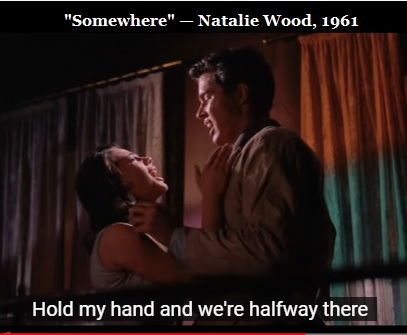
"'Night Sky' is an absorbing series with an interesting premise
that marches to its own drummer…." — NY Post , May 18.
See as well posts tagged "Bedrock" in this journal.
"I need a photo opportunity . . . " — Paul Simon

For the late actor Kenneth Welsh, who reportedly died at 80
on May 5, 2022 …
A Log24 search — Edmonton.
|
Jason Kehe at WIRED today — "The Real Reason Matrix Resurrections Bombed" . . . . "Lana Wachowski’s film practically burns with mirrors, with self-scrutiny. The very first shot is of an upside-down someone walking toward us. It’s a reflection, it turns out, in a puddle. We’re in for inversions and reversals, Wachowski is signaling, and not just cinematographically. The first third of the movie or so recapitulates the events of the first Matrix, but badly, unconvincingly. 'Why use old code,' one character asks, 'to mirror something new?' The movie critiques, even hates on, itself. It looks in the mirror and doesn’t like what it sees." . . . . |
Dr. Robert Ford — "Analysis."
* Title suggested by a textbook.
See "High Life" in this journal.
An image from Slovenia missed earlier* in the search above —
"Et cetera, et cetera, et cetera." — Oscar Hammerstein
* See "Robin Wilson" in the Design Grammar post of
19 Oct. 2017. The author of the above document may
or may not be the Robin Wilson of Gresham College.
The New York Times this afternoon —
From Log24 on the Catholic dies natalis of
the von Trapp daughter above —
|
"Literature is not demography, nor is it politics, even if it is quite often political. Progress, at least when it comes to cultural production, becomes lasting not when one is trying to join the reigning establishment, or lamenting how exclusionary it is (it so often is!), but, to quote that anti-Semite Ezra Pound, when one seeks, in the first place, to make it new ."
— Mordechai Levy-Eichel and Daniel Scheinerman on |
And then there are methodological sinkholes —
See Log24 posts tagged Sinkhole and . . .

See also . . .
http://m759.net/wordpress/?s=Prism .
Further searching, on the wider Web, yields . . .
"Blair has multiple sclerosis, a condition Didion shared."
— Susan Burton, review of Mean Baby , NY Times 15 May 2022
Another recent narrative about Didion and MS —
|
March 3rd, 2022 by Emily Carmichael |
Daniel Radcliffe in the recent film "The Lost City" —
|
301
302
303
304 |
From the Log24 post "Fish Babel" —
The final page, 759, of the Harry Potter saga —
|
Sunday, July 14, 2013
Working Backwards
|
|
"I twisted my mind like a bright ribbon, folded it,
"All manner of thing shall be well |
See also some context for these quotations.
"By a knight of lines and shadows
I summoned am to tourney…"
— Adapted from "Tom O' Bedlam's Song"


Updates from later the same day —
Related affine structures —
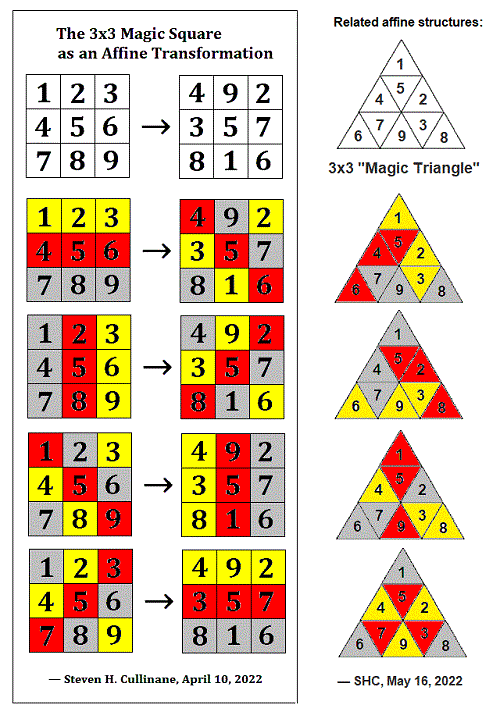
See also "Square+Triangles" in this journal.
The fishlike shapes within three of the above
ninefold colored triangles suggest some . . .
Related Entertainment —

See also posts tagged "Will the Circle" and a Carter family song.
(The YouTube upload date on that song is not without interest.)
"Turn on, tune in …"
https://webusers.imj-prg.fr/~leila.schneps/
grothendieckcircle/Spirituality/Spirituality19.pdf
Fred Ward, an actor, reportedly died on Sunday, May 8, 2022.
Music that was used on the soundtrack of one of his films —
In memory of Ward and Nin-Culmell — See Jan. 14, 2004, in this journal.
A new article on Norwegian artist Josefine Lyche was added
to the Norwegian Wikipedia on May the Fourth, 2022.
Meanwhile . . .
USA Today — "Finland shares an 830-mile border with Russia."
Also bordering Russia … Norway. See the art of Josefine Lyche
at the only legal land Russia-Norway border crossing.
In memory of an actor who reportedly died on May 7 —
"Mr. Jenkin's play aspires to a Borgesian take on
American cultural rubble (pulp novels, films noir,
diner menus, pop songs, etc.), here assembled into
a labyrinthine, coincidence-driven and self-consciously
artificial plot." — Ben Brantley, New York Times ,1996

Related reading:
Shibumi: A Novel
and
"The Diamond Theorem
in Basque Country."
|
A Story That Works
“There is the dark, eternally silent, unknown universe;
and lastly, there is lonely, story-telling, wonder-questing, – Fritz Leiber in “The Button Molder“ |
♫ "Will the record be unbroken . . . ?"
— Adapted song lyric
A link to
https://www.newyorker.com/magazine/
2022/05/16/how-queer-was-ludwig-wittgenstein
appeared today in my RSS feed as . . .
Related remarks: Art Space, a Log24 post of 7 May 2017.
The art above is by one Alexis Beauclair. See as well
an earlier illustration, also credited to Beauclair —
From the Centre de recherches mathématiques (CRM) —
Related remarks —
"The form, the pattern" — T. S. Eliot — and . . .
See as well the new URLs ternary.space and ternary.group.
A tune from the conclusion of Episode 1 of Season 3,
"A Discovery of Witches" —
I prefer the Carter Family version and, from the YouTube upload date
of the above British version . . .
From a Wikipedia article suggested by the previous post —
"A recurring theme among these characters
is that a dead human has been reanimated
with cybernetic technology."
"Tamen usque recurret . . . ." (Phrase originally from Horace.)
Related material — Posts tagged Interality and Seven Seals.
From Hermann Weyl's 1952 classic Symmetry —
"Galois' ideas, which for several decades remained
a book with seven seals but later exerted a more
and more profound influence upon the whole
development of mathematics, are contained in
a farewell letter written to a friend on the eve of
his death, which he met in a silly duel at the age of
twenty-one. This letter, if judged by the novelty and
profundity of ideas it contains, is perhaps the most
substantial piece of writing in the whole literature
of mankind."
Update to yesterday's "Use Your Noodle" post . . .
Click the above image to enlarge.
Update of 2:40 AM May 7, 2022 —
Flusser's seven "pillars" appear to be the main sections of the Tractatus
— numbered 1 through 7, with many intermediate numbered passages.
For a more geometric meditation on "the shape of things," see other
posts tagged "Shape Constant" in this journal.
Related material —
"A good, involving mystery featuring strong characters and
prose as smooth as the brim of a fedora, this novel makes
smart points about writing, publishing and the cult of mysteries."
— Review of A Smile on the Face of the Tiger
See also . . .
An essay from . . .
The Shape of Things: A Philosophy of Design Wittgenstein’s Architecture The universe of texts can be seen as a landscape. In it one can make out mountains and valleys, rivers and lakes, castles, farmyards and inner-city slums. On the horizon of the scene visualized in this way, the Bible and Homer appear as gigantic ice-covered mountains. The vast, tranquil lake of Aristotle’s texts, where fishermen idly throw their nets and philologists row their boats, occupies a part of the valley bottom. There, the tumbling waterfall of Nietzsche is captured by the broad river of modern pragmatism. Towering above everything, the Gothic cathedral of St Thomas Aquinas’s Summae dominates the cathedral square of the city, in which the roofs and gables of Baroque speculations jostle one another. In the suburbs of this city, one catches sight of the Romantic, Realist and Modernist housing-blocks and factories of more recent litera¬ ture; somewhat apart from all these stands a small, apparently insignificant house resembling scaffolding more than a finished building: Wittgenstein’s building. This little house is called the Tractatus. This name isn’t the product of a one-track mind. For when one enters the house, one notices immediately that this is not a place that has lost track of things. Quite the opposite: It is a place of mirror- images. The house stands on six foundation pillars which support one another by means of cross-beams organized in a hierarchy. In the middle, however, there rises a seventh pillar whose function it is to cut through the building and free it from the ground. So the house with all its corners, angles and joints is protected, armoured and impregnable. And yet, and for that very reason, it is threatened with collapse and disappearance without trace – condemned in advance and from the outset. The building is set out: It consists of propositions. Every proposition presupposes all the preceding ones and is itself the 76 presupposition of all the following propositions. Proposition by proposition, anyone who enters progresses through the prescribed rooms, and his step is supported by consistencies. Suddenly, with one proposition, one single proposition, the ground gives way beneath his feet. He falls head first into the abyss. Wittgenstein’s house is situated in a suburb of that city whose cathedral square is dominated by the towers of Thomas Aquinas’s cathedral. The small, modest pillars of Wittgenstein’s house support one another according to the same logico- philosophical method as the pillars of the cathedral support one another. But there appears to be a world of difference between the cathedral and the little house: The cathedral is a ship pointing in the direction of heaven, and the little house is a trap-door pointing in the direction of a bottomless abyss. But be careful: May Thomas Aquinas not have been right in saying after his revelation that everything he had written before was like straw? May not the heaven above the cathedral be the same black hole as the abyss beneath the little house? May not Wittgenstein’s little house be the cathedral of today? And those mirrors whose images simultaneously mirror one another, may they not be our equivalent of stained-glass windows? The landscape portrayed in this essay, it goes without saying, is a metaphor. Is it possible to identify it as Vienna? And is it possible for anyone entering Wittgenstein’s little house in that unlikely place to make out a hint of the unsayable? What we cannot speak about we must pass over in silence. 77 |
Click the above image to enlarge.
See as well . . .
Update of 2:40 AM May 7, 2022 —
Flusser's seven "pillars" appear to be the main sections of the Tractatus
— numbered 1 through 7, with many intermediate numbered passages.
For a more geometric meditation on "the shape of things," see other
posts tagged "Shape Constant" in this journal.
*Byron Gogol is a tech magnate in the HBO series "Made for Love."

WIkipedia on the URL suffix ".io" —
"In computer science, "IO" or "I/O" is commonly used
as an abbreviation for input/output, which makes the
.io domain desirable for services that want to be
associated with technology. .io domains are often used
for open source projects, application programming
interfaces ("APIs"), startup companies, browser games,
and other online services."
An association with the Bead Game from a post of April 7, 2018 —
|
Glasperlenspiel passage quoted here in Summa Mythologica —
“"I suddenly realized that in the language, or at any rate A less poetic meditation on the above 4x4x4 design cube —
"I saw that in the alternation between front and back, See also a related remark by Lévi-Strauss in 1955:
"…three different readings become possible: |
The recent use by a startup company of the URL "interality.io" suggests
a fourth reading for the 1955 list of Lévi-Strauss — in and out —
i.e., inner and outer group automorphisms — from a 2011 post
on the birthday of T. S. Eliot :
A transformation:
Click on the picture for details.
See "Flusser and the I Ching," by Peter Zhang.
Zhang has written extensively on the concept of "interality,"
a term coined by his colleague Geling Shang.
For interality as the mathematics underlying the natural
automorphism group of the I Ching, see my own work.

See also "Interality" in this journal.
Update of 8:56 AM ET
Friday, May 6, 2022:
“You have to all have a shared language of all this stuff,
otherwise it can get pretty confusing,” Waldron said.
The Waldron quote is from . . .
Later, at 9:29 AM ET . . .
See as well other posts now tagged Strange Change.
In memory of a comic-book artist —
His views on physics at
http://web.archive.org/web/20060805085915/
http://nealadams.com/PhysicsOfGrow.html
… and a New Yorker cartoon from
his reported date of death — April 28 —
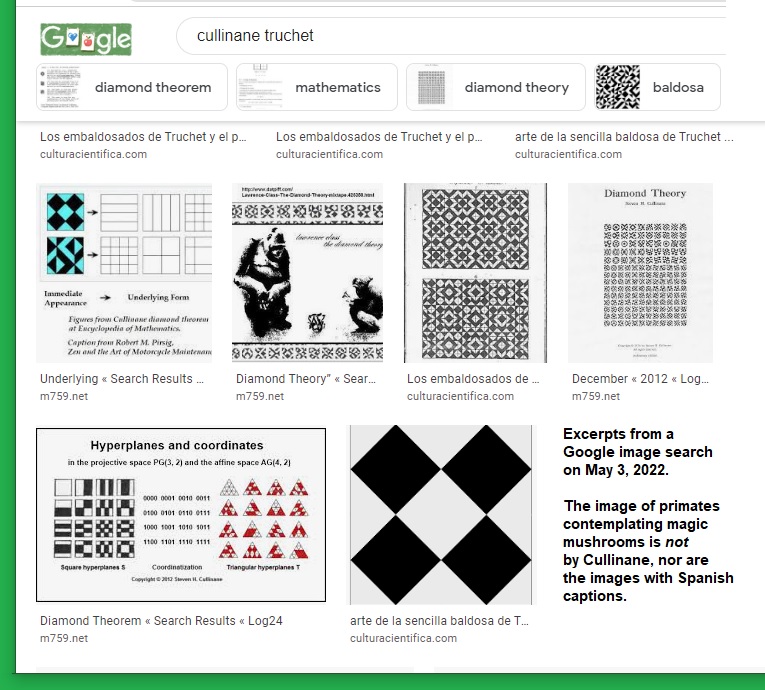

"Los embaldosados" means the tilings .
The image referencing Robert M. Pirsig is
from "Classic Romantic," Dec. 19, 2020.
"Moon Knight" will conclude at 3 AM ET Wednesday.
Related art —
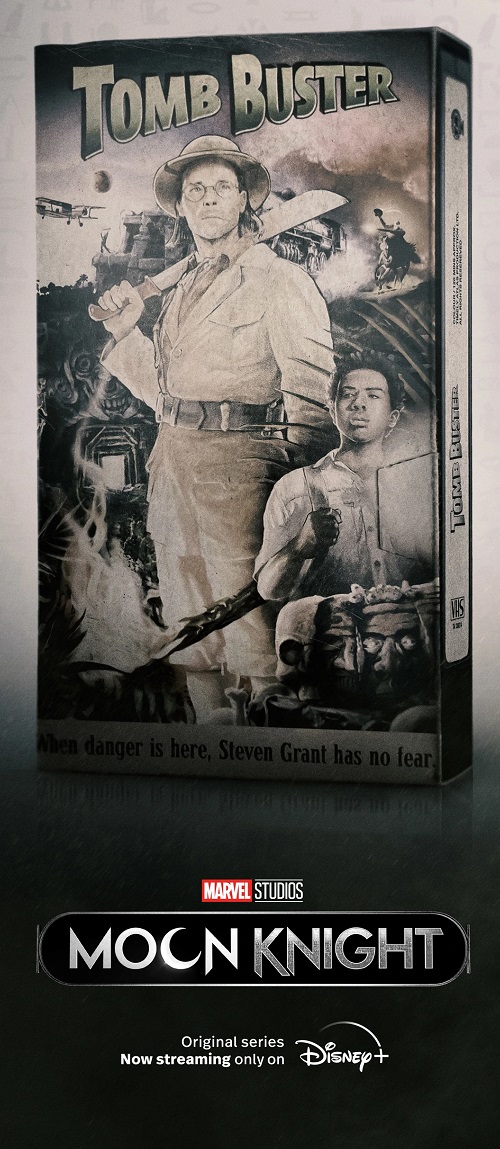
Related cinematic art — ("Tomb Raider," 2018) —
An image that some — perhaps even Uncle Walt himself —
might prefer to the above depiction of Lara Croft —
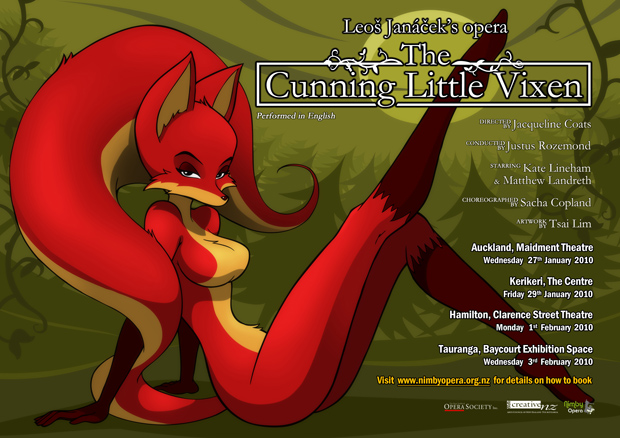
" While quantum theory has proven to be supremely successful
since its development a century ago, physicists have struggled to
unify it with gravity to create one overarching ‘theory of everything.’ "
— News release 1-May-2022 from
Foundational Ouestions Institute, FQXi
See as well the new URL "overarching.group."
From a 2017 Kate Mara film —
For a rather different vision of perfection, see Mara in "Morgan" (2016).


The pane number of interest — 15 or 14 ? —
depends on your perspective.
Related cinematic art of Oscar Isaac —

"Edward Bulwer-Lytton (infamous author of the opening line,
'It was a dark and stormy night') was a Victorian-era writer.
In 1870, he published a science fiction novel, The Power of
the Coming Race, which describes an underground race of
superhuman angel-like creatures and their mysterious energy
force, Vril, an 'all-permeating fluid' of limitless power."
— From a source linked-to in the post Vril Chick.
"Credit where credit is due" . . .
* See the previous two posts, now also tagged Play Room.
Powered by WordPress